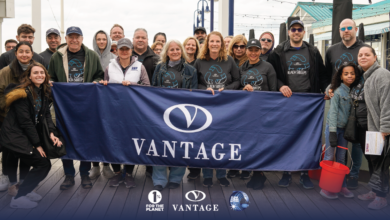4 Steps to Fend Off Vehicle Regulations on Wraps
As the wrap industry continues to grow, expect more and more communities to consider putting some regulations on them
The more vehicle wraps grow in popularity (and visibility), the more local and state governments have moved to restrict them, sometimes applying bizarre and illogical arguments.
The International Sign Association’s advocacy team works with communities throughout the United States, and we’ve seen several communities grappling with this issue.
Vehicle wrap pros see it, too. ISA asked the pros, in a Facebook group devoted to the wrap industry, about issues they faced with wrap-related regulations. We heard plenty of comments, and they confirmed that government interference is a pain point for their business and that of their customers.
Some regulations make sense, such as preventing abandoned vehicles from being used solely to display a sign (often a banner). But throwing wraps out altogether prevents small businesses from capitalizing on this popular and effective type of advertising.
Some of the codes proposed defy logic. Imagine having to get a permit approved every time a company expands or switches vehicles. Or not being able to park a wrapped car within so many feet of a sidewalk. Or limiting how long a wrapped vehicle can park in the same spot.
As one commenter on the Facebook page noted about a town that is proactive about its wrap citations, “There are many areas that houses should be condemned, trash is in yards, and so on. But a business owner who is TRYING to work and bring revenue to the city is a problem?”
Before you grab your pitchforks and march down to city hall demanding change, take a deep breath. ISA has faced similar issues in related sign areas, and we’ve developed a strategy for sharing the importance of signs to businesses, which in turn provide jobs and tax revenues. That will get the attention of local leaders and influence their decisions far more effectively.
Sometimes city leaders may not understand a particular issue and the knee-jerk reaction is to overregulate. Helping to educate them on the benefits of signage, including the visually stimulating medium of a vehicle wrap, can facilitate positive change. It is something that we’ve seen in working with planners and city leaders on digital signs, another hot button, and a heavily regulated type of signage. I have no doubt it will be equally effective with wraps.
Our strategy has been to provide information that helps local officials understand the benefits of digital signs and how they work. We can apply this same winning strategy to vehicle wraps. Obviously, wraps aren’t traditional signage and don’t always fit under the usual local sign regulations. In many cases, wrapped vehicles are controlled by state regulators, such as departments of transportation and departments of motor vehicles. But the same basic approach and techniques can pay off.
1. Understand their concerns. The increase in the number of vehicle wraps has gotten the attention of local officials and even law enforcement. As ISA’s advocacy team works with communities throughout the country, we’ve noticed an increase in questions like:
- Are vehicle wraps distracting to drivers?
- Are vehicle wraps ugly?
- Are vehicle wraps a way to get around sign codes?
The answer to all of these is a resounding “no.” But understanding what is driving the desire to regulate is still a good place to start. Answering each of these questions can help alleviate those bureaucratic concerns.
2. Provide information. The Sign Research Foundation is a tremendous resource whose research covers the gamut of the sign, graphics, and visual communications industry. Some broader topics provide some guidance to wrap issues.
The issue of driver distraction is often used by the government to justify cracking down on visual communications. For example, digital signs are frequently cited as contributing to a decline in traffic safety. However, this claim goes against our shared experience and evidence-based knowledge.
We have all viewed digital signs while we drive, yet we are hard-pressed to confirm accidents in police reports or the news, compared to cell phone use while driving, which we all know is dangerously distracting. But we have facts that back this up.
SRF’s research on “Digital Signage and Traffic Safety: A Statistical Analysis,” conducted by Texas A&M University, looked at crash statistics in areas where a digital sign had been installed and found no increase in accidents after the sign had been installed. Now, this reputable research is being used to counter driver distraction arguments.
The same approach goes for vehicle wraps and distracted driving. We witness wrapped vehicles every day in front of us on the highway or parked in a lot as we drive by, and yet we don’t make unsafe driving maneuvers while doing so. It has been proven that distractions inside the vehicle are far more distracting than what the driver sees outside the vehicle, and this axiom applies to vehicle wraps.
Are vehicle wraps ugly? While art may be in the eye of the beholder, showcasing some of your best projects can certainly negate that argument. On the Facebook discussion, one wrap artist posted his work alongside a beat-up sedan and asked which was least appealing. If the regulator’s argument is for aesthetic reasons, this could make a compelling point. It may also help for local officials to consider that many law enforcement and public transit vehicles are wrapped for identification and advertising purposes, yet they don’t raise the same aesthetic and driver distraction concerns.
As for using wraps to get around sign codes, let’s take a step back. As an industry, we benefit from reasonable and legally enforceable sign codes. No one is saying that we abandon all sign regulations, just that we all need to play by the same rules. Vehicle wraps are a powerful form of advertising and particularly cost-effective for small businesses. Working to develop rules that balance community aesthetics with this important advertising tool benefits everyone.
3. Tell the story. Those who work in the vehicle wrap industry know the power of a quality wrap in creating a compelling marketing story. They know the value of raising brand awareness, and they know the stories their customers have told them about how the wrap built business leads, but those benefits may have not even occurred to a local official or planner. Help them understand the value, cost, and return-on-investment of this type of advertising.
We have not always been great at telling these types of stories. As with other types of signs, though, we have found this to be an effective argument. There is nothing quite as powerful as a local business owner standing up at a public meeting and touting the impact that signs have had on his or her business.
ISA works with local chambers of commerce all over North America with the goal of educating businesses and local officials about the value of signs, graphics, and visual communications. Chambers are a valuable tool to defend the rights of their members to brand their businesses, and with some key resources and passionate advocates at the ground level, they can support the rights of vehicle wraps too.
SRF has several research projects that tout the benefits of signs to businesses. Again, most focus broadly on the impact of signs overall, not specifically wraps. But they could provide some information that is useful. Explore these at the SRF website.
4. Get involved now. If your community is discussing regulating signs, even just the earliest hint of it, start gathering those happy business owner stories and pulling together allies who would be willing to go to bat for this issue.
One strategy that will lead to failure every single time is to avoid the issue, believe it is someone else’s role, and hope it goes away. That will never work-and may lead to business-threatening codes that severely limit your abilities to provide wraps that benefit customers.
After walking the floor at ISA International Sign Expo 2019 and seeing the latest innovations in our industry, one wonders how the government will find a way to regulate these kinds of visual communications. With the advent of lighted vehicle wraps and holograms, it’s not a question of “if” but when. As an industry, let’s stay ahead of the curve and stay proactive.
We’re not reinventing the wheel here. ISA has successfully used these tactics throughout the United States and Canada to help improve sign codes. We’ve seen it work with digital signs and several other forms of signs, graphics, and visual communication. And I have no doubt that as we face continued regulation on vehicle wraps, we will see it work here, too.
P.S. These organizations are here to help:
The International Sign Association (ISA) works with local officials in communities across the country on sign code issues. Contact signhelp@signs.org when you hear of an issue where you conduct business. ISA provides its members with complimentary advice and resources to help community leaders develop reasonable sign codes. ISA has tools aimed specifically at educating local officials.
The Sign Research Foundation (SRF) develops research for the industry. The publication Best Practices in Regulating Temporary Signage is a proven guide to help local officials develop reasonable and beneficial sign codes. It includes a section on vehicle wraps.




